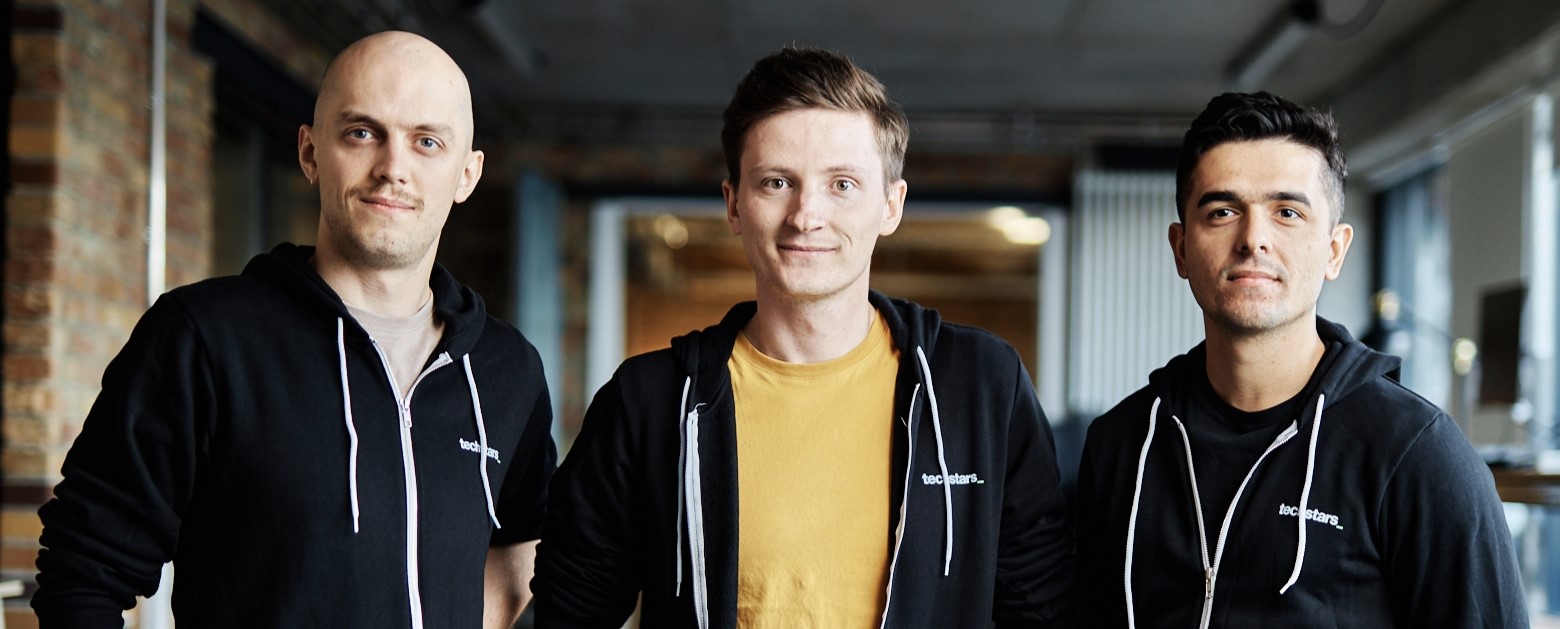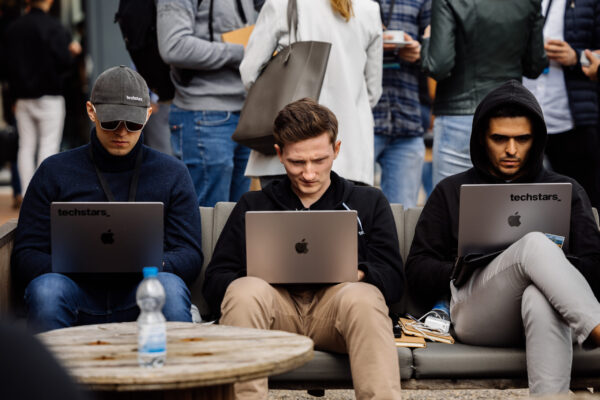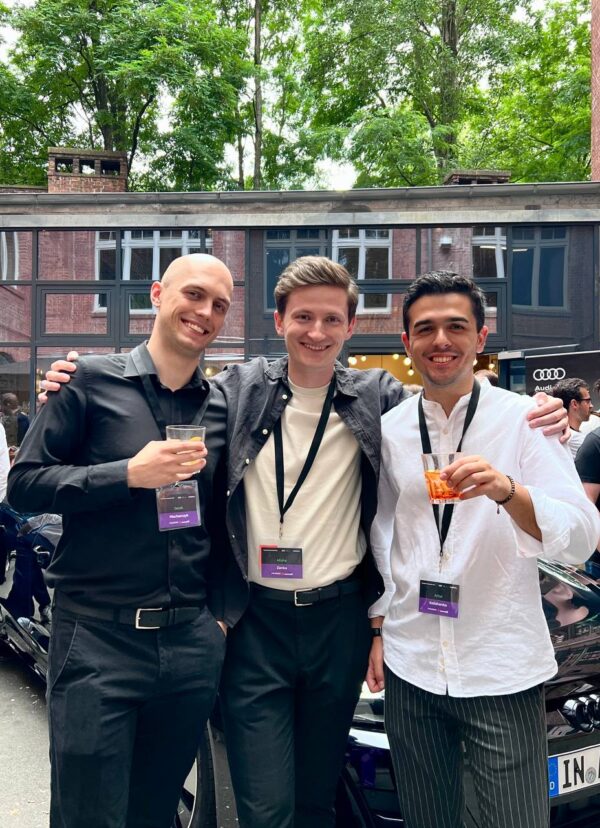Introducing Mowa.ai
Q: Can you give us a brief introduction to your company, Mowa.ai?
A: We are a startup founded by three co-founders who all have technical backgrounds as machine learning engineers, each bringing six to seven years of experience to the table. We decided to join forces last year with the intention of building something impactful. In just a few months, we gained significant traction and realized that we were onto something big in the AI space. We initially started with a focus on voice technology and text-to-speech, but we’ve always been centered around machine learning and deep learning. As we worked with voice, we also integrated text because of its close relation. This led us to a pivot toward our current direction. We simplified our initial grand vision to focus solely on the interaction of models with company data. Now, we are in the process of building an AI data analyst.
The main idea behind our product is to automate the work typically done by data experts. There are a lot of repetitive and, frankly, boring tasks in data analysis that we believe can be automated. Businesses often have questions about their data, needing various plots or dashboards created. Our AI data analyst is designed to automate these tasks, making the data analysis process more efficient and less tedious.
Q: Did this business idea stem from personal experience?
A: Yes, the idea evolved from our personal experiences and frustrations. We initially started with a different concept, but we quickly realized that there was a common pain point in our past experiences. Working with data in smaller companies or as a part of our job roles, we often received numerous basic questions from non-technical people who didn’t know how to extract information from databases or lacked data visualization skills. It was clear that there was a need for a tool that could handle these repetitive tasks and answer these basic questions, allowing data experts to focus on more complex and interesting problems. This personal connection to the problem we are solving was a significant motivator for us to build Mowa.ai.
The Journey to Techstars
Q: What led Mowa.ai to join Techstars?
A: Interestingly, we didn’t actually apply to Techstars initially. We were in the full swing of working on our startup full-time, and we were aware of various accelerator programs, including Techstars Berlin. We thought it could be beneficial for us, especially as first-time founders. However, we believed it was too early for us to apply and planned to do so for the next batch when we were more prepared and had a refined idea and more traction. On the very first day, we started working full-time on our project, we updated our LinkedIn profiles, and my co-founder made a post announcing our venture. That same day, a representative from Techstars, responsible for sourcing startups, reached out to us. We decided to give it a try, not really expecting much given our early stage. However, the outcome was different than we anticipated.
We went through the interview and question process but didn’t apply through the typical online application form; we were directly approached and entered into the first call. It was a unique entry into the accelerator, skipping the initial application stage.
Q: Since you were at such an early stage, how did Techstars evaluate Mowa.ai?
A: Techstars focused primarily on our team rather than our traction or specific aspects of our idea. They expect startups to pivot and understand that the idea might change significantly, even to the point where traction could be reset to zero. Their main focus was on evaluating whether we had a strong team with the potential to navigate these changes and challenges.
They looked at various aspects of our team, including our experience and our history together. Investors and accelerators like Techstars typically have certain checkboxes they want to tick when evaluating a team. We had known each other for years, which was a strong point in our favor. Although I can’t recall all the specifics, I remember we ticked four out of the five typical boxes that investors and accelerators look at when evaluating a startup team. So, the key takeaway here is if you have a strong team, you have a good chance of being accepted into an accelerator program like Techstars. The idea is important, but a strong team is crucial.
Q: What approach did Mowa.ai take in the Techstars interview process?
A: The interview process was quite an unexpected journey for us. We entered each interview thinking it might be our last, especially considering we hadn’t formally applied and believed we were too early in our development to be seriously considered. However, looking back, I can offer some insight that might help others in their interview processes. First, speed is crucial. Techstars valued our ability to move quickly, iterate, and respond promptly to questions. Throughout the interview process, which spanned several weeks and included numerous calls, we consistently demonstrated progress. In every call, we had something new and different to share about what we were working on. This approach highlighted our dedication to pushing our company forward and not just waiting around for opportunities to come to us.
So, a tip for others would be to focus on showing progress and speed in your work. Be ready to showcase your ability to iterate quickly and adapt, as this is something accelerator programs and investors value highly. Ensure that in every interaction, you can demonstrate that your startup is constantly evolving and improving. This proactive approach can set you apart and show that your team has the drive and agility needed to succeed in a startup environment.
Navigating the Techstars Program Curriculum
Q: Can you give us a brief overview of what the Techstars program curriculum looks like?
A: The program spans three months and is quite intense, especially at the start. During the first month, we were constantly busy, diving deep into the exploration phase. One of the most notable and famous parts of Techstars is the “Mentor Madness” period. This involves daily calls with potential mentors, eight calls a day for two whole weeks. It’s as intense as it sounds, a bit of madness really, but also an incredibly interesting experience. These calls give you the opportunity to refine how you talk about your company and test different ways of presenting your ideas. You get immediate feedback and can iterate on your messaging almost in real time. It’s like rapid-fire interviews, and what you want to get out of these calls really depends on you. Moving into the second month, the focus shifts more towards building traction. This part of the program is not as intense, which gave us some much-needed time to work and rework our approach.
Finally, the last month is geared towards preparing for investment opportunities and the Demo Day. This is where you need to be ready to give the best pitch of your life. The preparation is rigorous, with extensive practice on how to present on stage and articulate your startup’s value proposition. It requires a lot of effort, but it’s also not as intense as the first month, allowing you to balance preparing for the pitch and continuing to work on your company.
Major Advantages of Techstars Beyond Financial Support
Q: Beyond the financial aspect, what were the major advantages of participating in the Techstars program?
A: While the financial support was beneficial, it wasn’t the primary advantage of the program. For those solely seeking funding, direct engagement with investors might be a more lucrative option. Techstars offered invaluable resources beyond money. One of the more apparent benefits was the extensive network we gained access to. We anticipated this, expecting to connect with a diverse group of startup founders, investors, and industry experts. Europe has a vibrant startup ecosystem, and being a part of Techstars allowed us to tap into that. So, knowledge and networking were significant perks.
However, an unexpected benefit was the close interaction with the other 11 startups in our batch. We were all selected through a rigorous process and found ourselves working side by side, sharing an office space. This setup fostered a community of knowledge sharing on a daily basis. Whenever we hit a roadblock or needed advice, we could turn to our peers, many of whom had faced similar challenges or had expertise in particular areas. For instance, something as seemingly straightforward as setting up a newsletter became more manageable. We could quickly get advice on what worked, what didn’t, and what we needed to be mindful of. This ability to make shortcuts and lessen the research load was invaluable. It was like having a community of advisors at our fingertips.
Personally, I found this aspect of the program to be incredibly beneficial. The interaction and knowledge exchange with other startups at a similar stage provided a broader perspective and practical know-how, contributing significantly to our journey. It was a surprising and highly valuable element of the Techstars experience.
Q: Do you continue to interact and receive support from the Techstars community and the peers you met during the program?
A: Maintaining relationships with peers from the program has been a mixture of close connections and more casual interactions. We stay in touch with many, reaching out whenever needed, and they’re always responsive. Geographical distribution means we don’t meet in person as often as we’d like, but we make an effort to visit places like Berlin to reconnect.
As for the Techstars community, their support is structured for long-term engagement. Having graduated just two and a half months ago, we haven’t started fundraising yet. However, based on what I’ve seen and heard, Techstars plays a crucial role during this phase. They offer assistance with negotiations, help garner interest from venture capitalists, and provide general support in getting the deal through. They have a dedicated team to aid portfolio startups even after the program concludes.
I anticipate the support from Techstars to be even more substantial during our fundraising efforts, making this aspect of their post-program engagement particularly valuable for us. This ongoing support and availability to assist us in our next steps is something we’re looking forward to leveraging.
Q: Can you share a particular moment during the program that stood out to you, something that really surprised or inspired you?
A: One moment that truly stands out was during the very first week of the program. I found myself completely taken aback by the concentration of like-minded individuals in one room. It was overwhelming in the best way possible—being surrounded by startup founders who are all driven, focused, and thinking along the same lines.
The realization hit me that I was part of this incredible community, and the experience was so surreal, almost unbelievable. It felt like everyone was on the same wavelength, and the energy in the room was palpable. This wave of inspiration and awe was so strong at the beginning, and even though I eventually got used to it, that initial impact will always remain a highlight for me. It was a moment of clarity and excitement, realizing that I was part of something much bigger than myself. These were real people, not just characters or personas, and they were all here, in the same room, sharing this journey. It was a profound experience, one that set the tone for the rest of the program and left a lasting impression.
Current Status and Ongoing Projects at Mowa.ai
Q: Can you update us on Mowa.ai’s current status and what the team is currently focusing on?
A: Currently, we are in the midst of initiating pilot programs with various companies. We have already received data from a number of companies and are actively working on kickstarting the product development cycle. The goal is to iterate upon our product using real data from real customers, gather their feedback, and continuously improve our offerings. Our immediate focus is on establishing more pilot programs and converting those into long-term customer relationships once the pilots conclude successfully. Alongside this, we are also investing our efforts in understanding the most effective ways to deliver value to these companies through our product. It’s a crucial stage for us, as it will shape the future direction of our product development and customer engagement strategies.
As for our geographic focus, our primary attention is on Poland. Being locally based allows us to engage with clients and networks in person, fostering stronger connections. Germany, and specifically Berlin, is our second priority due to its proximity and our existing network in the area. While we have some pilot programs outside the EU, our emphasis is definitely on local and nearby regions. The farther away a potential client or partner is, the more challenges arise in terms of communication and relationship building. So, while we are open to opportunities beyond the EU, our strategic focus remains closer to home for now.
Q: Have you explored various growth channels, and is this approach also how you managed to secure partnerships?
A: We’ve taken a conventional B2B approach, actively engaging in various outreach channels like emails, calls, and the like. Our strategy is to test these channels one at a time and evaluate what’s working for us, and what isn’t, especially with our ideal customer profile in mind.
As of now, we have a few pilot programs up and running, and we’re still in the early stages of figuring out the most effective channels for our needs. It’s a mix of outbound outreach and networking that’s helping us generate leads and move forward. Securing partnerships and closing deals in the early stages can be challenging, as we’re still working on establishing our brand and proving the value of our product to potential clients. It’s a learning curve for us, but it’s an exciting journey, and successfully navigating this phase will undoubtedly be a valuable experience for the future of our company.
Q: Could you share details about your team size?
A: Currently, we are a team of three founders working full-time. Additionally, we have onboarded a few mentors, particularly from the Techstars program, who support and guide us through regular calls and provide valuable domain knowledge. During the program’s Mentor Madness event, we connected with these mentors, and they have remained a crucial part of our support network since then. Besides our core team and mentors, there are a few individuals who are intrigued by what we are doing and contribute on a part-time basis. It’s surprising, but it seems people really enjoy being part of the creative process, even if the compensation is not substantial.
Final Advice
Q: Can you share any final tips for founders considering applying to Techstars?
A: Definitely! My first piece of advice is to not worry about whether it’s too early to apply—just go for it. Applying is free, and if you don’t make it in this round, you can always try again later. We were lucky to get in, and I think it’s important for startups, particularly in the early stages, to take that chance. It’s crucial, especially for technical founders, to understand the importance of iterating quickly. A monthly iteration cycle is simply not fast enough. You need to be clever and creative in finding ways to quickly validate your ideas, and be prepared to move on quickly if they don’t work out.
My second tip is about communication. Talk to as many people as possible, especially potential customers. Ask yourself, “Who will buy this? Who will use this?” and then go directly to those people. You might think your solution is perfect for a sales manager, for example, but unless you talk to them, you can’t be sure. Don’t make assumptions about your users’ needs—go out, talk to them, and understand their challenges before you start building. It’s a common mistake for technical founders to stay in their comfort zone and focus on the product, but pushing yourself to talk to potential users is crucial. Don’t wait until you’ve spent months building; start those conversations today.



